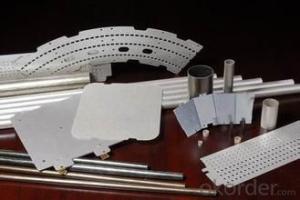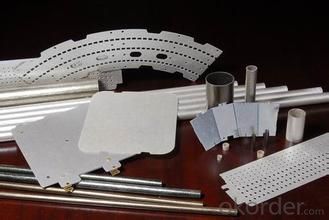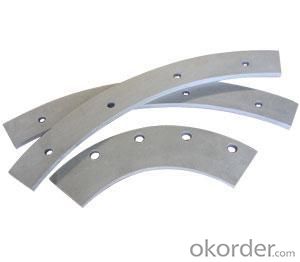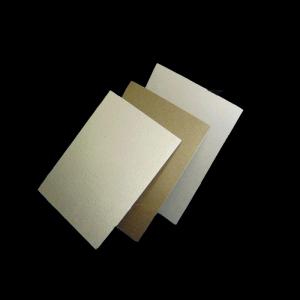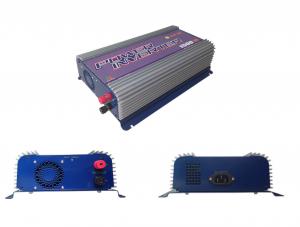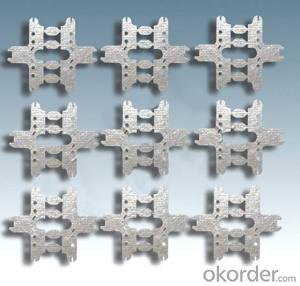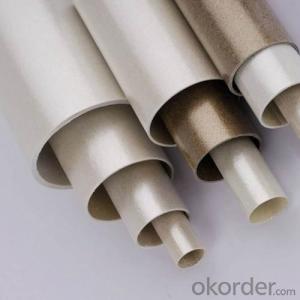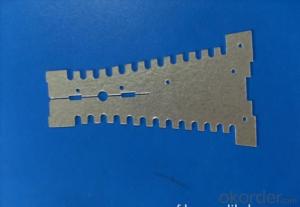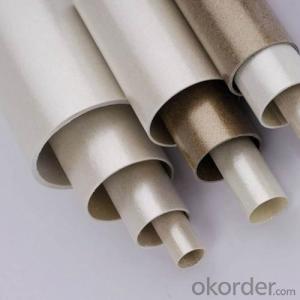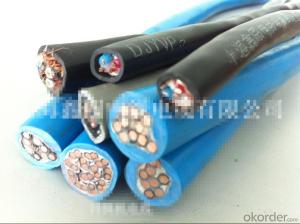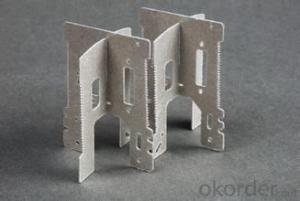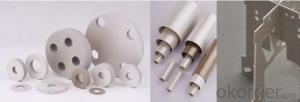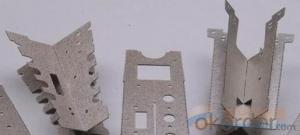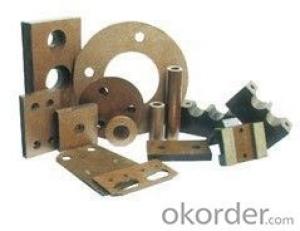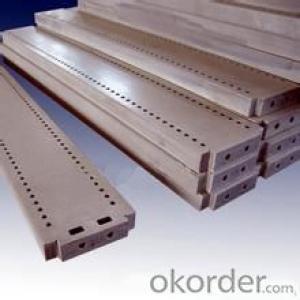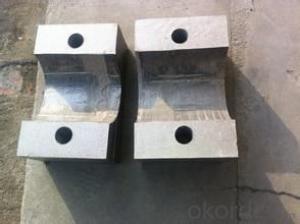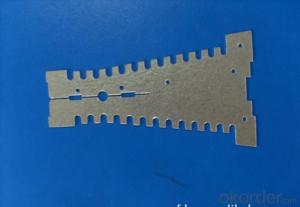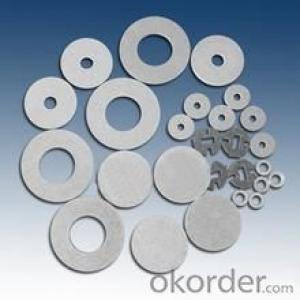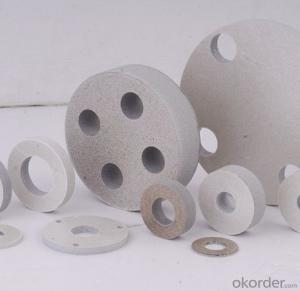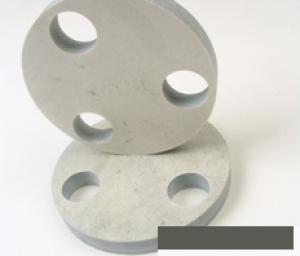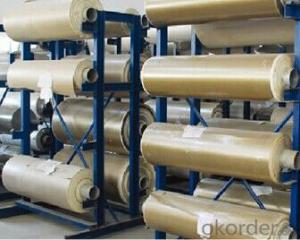Mica Parts Used in Medium Frequency Furnaces
- Loading Port:
- Shanghai
- Payment Terms:
- TT OR LC
- Min Order Qty:
- 100 pc
- Supply Capability:
- 10000 pc/month
OKorder Service Pledge
OKorder Financial Service
You Might Also Like
1. Introductions:
Mica is a rigid substrate able to withstand very high temperatures and are suited for applications up to 500°F (260°C). Mica heating elements offer several distinct advantages over other flexible heater technologies, including extremely low leakage, lower material costs, and higher operating temperatures. Our mica heating element is made by detail order requirments.
2. Applications:
This series mica plates are used mainly in household appliances (toaster ovens, microwave ovens, warm air blowers, hair dryers, electric iron etc.), metallurgy (such as linefrequency furnaces, medium frequency furnaces, electric arc furnace, etc.), medical equipment and other industries, used as the heating support, lining plate and partition plate of the electric appliances described above
Typical applications of mica heating elements are air heaters, enclosure systems, food service equipment, process and packaging equipment.
3. Main features of Mica Parts:
We have organized several common questions for our clients,may help you sincerely:
Rigid mica plates are featured with high strength, good performance, less smoke, less odor etc.
4. Technical Parameters:
MICA SHEET -----Technical data | ||||||||
ITEM | UNIT | RM | RP | RM-T | RP-T | FM | FP | |
Hardness |
| Rigid | Rigid | Rigid | Rigid | Flexible | Flexible | |
Mica paper |
| Muscovite | Phlogopite | Muscovite | Phlogopite | Muscovite | Phlogopite | |
Thickness | mm | 0.1-2.0 | 0.1-2.0 | 3.0-50 | 3.0-50 | 0.1-2.0 | 0.1-2.0 | |
Mica content | % | ≥90 | ≥90 | >88 | >88 | ≥90 | ≥90 | |
Bond Content | % | <10< span=""> | <10< span=""> | <12< span=""> | <12< span=""> | <10< span=""> | <10< span=""> | |
Density | g/m 3 | 1.6~2.45 | 1.6~2.45 | 2.1~2.4 | 2.1~2.4 | 1.6~2.45 | 1.6~2.45 | |
Heat | Continuous | ℃ | 500 | 700 | 500 | 700 | 500 | 700 |
Peak | ℃ | 700 | 900 | 700 | 900 | 700 | 900 | |
Heat loss at 500℃ | % | <1< span=""> | <1< span=""> | <1< span=""> | <2< span=""> | <1< span=""> | <1< span=""> | |
Heat loss at 700℃ | % | <2< span=""> | <2< span=""> | <1< span=""> | <2< span=""> | <2< span=""> | <2< span=""> | |
Flexural strength | Mpa | >160 | >140 | — | — | <1< span=""> | <1< span=""> | |
Water absorption 24h/23°C | % | <1< span=""> | <1< span=""> | <1< span=""> | <2< span=""> | — | — | |
Dielectric strength | KV/mm | >20 | >20 | >15 | >15 | >15 | >15 | |
Volume | 23℃ | ΩNaN | >1017 | >1017 | >1017 | >1017 | — | — |
500℃ | ΩNaN | >1012 | >1012 | >1012 | >1012 | — | — | |
Smoking Test | s | <4< span=""> | <4< span=""> | — | — | — | — | |
FAQ
We have organized several common questions for our clients,may help you sincerely:
--------What is the use of mica parts?
Mica laminate and washers made of our own high quality mica plates are used for home appliances, electro-magnets, micro-sensitive control gear etc
---------Which type of mica parts we can produce?
1. Rigid mica parts or Flexible mica parts
2. Muscovite mica parts or phlogopite mica parts
3. Thin mica parts or thick mica parts
4. All the special sized mica parts need drawing.
----------what advantages of mica parts?
1. Good high voltage insulation materials
2. Do not easily break up
3. Easily produce special size
- Q: What is the electrical performance of insulating materials
- The electrical insulating material is a material that is electrically insulated from the device and has a certain mechanical strength, typically having a resistivity of 106 to 1019.cm. Their function in electrical technology is as follows: 1 Insulate the conductor from the other parts; 2 Separate the conductors of different potentials 3 Provide the conditions for the energy storage of the capacitor 4 Improve the potential gradient in the high voltage electric field.
- Q: What kind of insulation is the insulating
- Ordinary heat conduction is made with fiberglass PP2. High thermal conductivity materials are made of thermally conductive
- Q: What type of enameled wire and insulation material is used for the compressor
- Small and medium-sized closed, semi-enclosed refrigeration compressors are used for the specific enameled wire specifically (QF) series.
- Q: Who knows what are the ability of 1300 degrees above the high temperature, insulation materials?
- Where the ablative material is also high temperature resistant material. For example, in the 300 ~ 600 ℃, in the air to maintain its mechanical strength, chemical resistance and so on.
- Q: What insulating materials do you need for power tools?
- Insulation system of power tools can be divided into basic insulation, additional insulation, reinforced insulation, double insulation. Basic insulation: enameled wire and iron core between the insulating paper (paper for the green paper or DMD insulation paper) is the basic insulation, Withstand voltage is 1250V;
- Q: What insulating materials are used for high frequency transformers?
- Where the water is mainly a resin and solvent or resin, oil and solvent composition, is based on polymer polymer, under certain conditions can be cured into an insulating film or insulation of the important insulation material, applied to high-frequency transformers After the surface, the solvent evaporates, the resin or the resin and the oil form a smooth film, showing the original pattern of the object. Easy to dry and durable, and can acid and oil.
- Q: What is the main purpose of insulating materials?
- The role of insulating material is in the electrical equipment to separate the potential of the live part of the insulation, so the insulation material should first have a high insulation resistance and pressure strength, and to avoid leakage, breakdown and other accidents.
- Q: What is the DMD insulation material?
- DMD insulating paper, the product is a layer of polyester film coated with adhesive, one side for the polyester fiber non-woven composite, calendering from a composite insulation products, referred to as DMD.
- Q: Wear-resistant, high temperature, insulation materials which
- Alumina - high temperature, corrosion resistance, wear resistance. Good electrical insulation 1600 ℃. For crucible, high temperature thermocouple casing, knives, mold and so on. Silicon nitride - has good high temperature strength, thermal expansion coefficient is small, high thermal conductivity, thermal shock resistance, the use of temperature as alumina, good electrical insulation. 1200 ℃ still have a high hardness. For mechanical seal ring, thermocouple casing, steam turbine blades and so on. Silicon carbide - high temperature strength, 1400 ℃ when the bending strength of (500 ~ 600) MPa. For the nozzle, furnace tubes, high temperature bearings, high temperature heat exchangers and so on.
- Q: What insulating material is best `?
- Insulation materials, also known as insulation materials. Insulation material refers to the electrical insulation material, the conductivity of about 10-10 West / m below. According to the needs of different electrical products, but also from the storage Can, heat, cooling, arc, moisture, mildew, anti-corrosion, anti-radiation, mechanical support and fixed, protective conductor and so on.
Send your message to us
Mica Parts Used in Medium Frequency Furnaces
- Loading Port:
- Shanghai
- Payment Terms:
- TT OR LC
- Min Order Qty:
- 100 pc
- Supply Capability:
- 10000 pc/month
OKorder Service Pledge
OKorder Financial Service
Similar products
Hot products
Hot Searches
Related keywords
